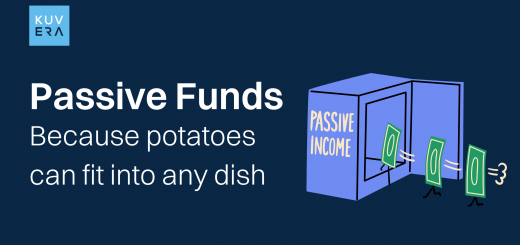Rupee cost averaging, or RCA lowers the average cost of buying mutual fund units or shares. Volatility in stock markets reflects the overall situation in an economy and is an integral part of investing in equity instruments. Investors tend to buy more when markets are going high and sell when the needs are low. This is a fundamental mistake that one must avoid.
Investing through SIP helps individuals avoid those fundamental investment mistakes and take advantage of rupee cost averaging. When you invest a fixed amount every month via a SIP, you will buy more units of mutual funds when the prices are low and buy lesser units when prices are high.
When you keep on investing for a more extended period, you will see that the average cost of the funds you bought is significantly lower than what would have been had you invested a lump sum at the beginning. You can only take advantage of the RCA method if you remain patient and stay invested for a long time period.
Why is Rupee Cost Averaging Important?
Stock markets are highly volatile and unpredictable. Therefore, it is tough for even seasoned investors to get their investment timing right. So it is always better to invest a fixed amount at regular intervals, irrespective of market conditions. This type of investment is done through a SIP, which lowers the average per-unit cost of investments over a long period. The strategy that reduces the average cost is known as rupee cost averaging. We will discuss important aspects of this method in detail in the following sections. To know everything about it, continue reading.
How Does Rupee Cost Averaging Work?
In this section, we will understand the concept of RCA with the help of an example. Suppose Mr. Singh is investing via a SIP of Rs. 2,000 on the 3rd of every month starting from April 2023.
| Month | Amount Invested (Rs.) | Price per unit (Rs.) | Units Bought |
| April 3 2023 | 2,000 | 12 | 167 |
| May 3 2023 | 2,000 | 14 | 143 |
| June 3 2023 | 2,000 | 13 | 154 |
| July 3 2023 | 2,000 | 15 | 133 |
| August 3 2023 | 2,000 | 19 | 105 |
| September 3 2023 | 2,000 | 16 | 125 |
| October 3 2023 | 2,000 | 18 | 111 |
| Total | 1,4000 | 14.9 (average cost) | 938 |
This table shows us the benefits of the RCA method. The average cost of buying the mutual fund units over seven months is Rs. 14.9, which is relatively lower than the cost he would have to pay to purchase mutual fund units from July to October (all over Rs.14.9). So from this example, we see that if you keep investing your amount over some time, your average cost is on the lower side.
Rupee Cost Averaging in Bullish Market Conditions
Here is an example of how this method works when market conditions are bullish:
Mr Singh is investing Rs. 1,000 per month via SIP starting from May 1 2023.
| Month | Amount Invested (Rs.) | Price per unit (Rs.) | Units Bought |
| May 1 2023 | 1,000 | 12 | 83 |
| June 1 2023 | 1,000 | 13 | 77 |
| July 1 2023 | 1,000 | 15 | 67 |
| August 1 2023 | 1,000 | 17 | 59 |
| September 1 2023 | 1,000 | 18 | 56 |
| October 1 2023 | 1,000 | 20 | 50 |
| Total | 6,000 | 15.3 (average cost) | 392 |
Even when the markets are bullish, i.e., they are rising, Mr. Singh’s average cost of buying mutual fund units is relatively lower than buying via a lump sum investment.
Rupee Cost Averaging in Bearish Market Conditions
Now we see how this method helps during bearish market conditions.
| Month | Amount Invested (Rs.) | Price per unit (Rs.) | Units Bought |
| June 1 2023 | 1,000 | 18 | 56 |
| July 1 2023 | 1,000 | 16 | 63 |
| August 1 2023 | 1,000 | 14 | 71 |
| September 1 2023 | 1,000 | 12 | 83 |
| Total | 4,000 | 14.6 (average cost) | 273 |
Again, we see that investors are better off when they invest a fixed amount every month and enjoy rupee cost averaging benefits even when markets are going down.
Rupee cost averaging does not guarantee profits for investors, but it may allow them to accumulate wealth over a period of time. It shows how a systematic approach to investing can help individuals minimise their losses.
Advantages of Rupee Cost Averaging
Here are some benefits of rupee cost averaging through SIP investments:
- Investors do not need to monitor the stock prices regularly.
- This method lowers per-unit costs over an individual’s investment horizon.
- Rupee cost averaging allows investors to accumulate significant wealth over time.
- Individuals can maximise the benefits of this strategy when markets are falling.
- It also provides mental relief for individuals as their investments are more resilient to market shocks.
Rupee Cost Averaging – When You Are Investing With Low Amount
Rupee cost averaging allows you to start investing with tiny sums of money practically. For instance, you might not have a sizable quantity available to invest all at once. Rupee cost averaging allows you to continually invest smaller sums of money. By doing this, you can take advantage of market growth without having to wait until you have a greater sum of money saved up.
Regular investments made with Rupee cost averaging make sure you keep investing even when the market is down. Maintaining investments amid market downturns might be scary for some people. In contrast, you run the risk of missing out on potential future gains if you stop investing or sell your current holdings in bear markets. According to Charles Schwab research, those who keep their money invested during bear markets, for example, typically enjoy better returns than those who withdraw it and then try to time a market recovery.
How Effective Is Rupee Cost Averaging?
Rupee cost averaging doesn’t always work out as expected outside of hypothetical cases. In fact, according to studies from the Financial Planning Association and Vanguard, dollar (Rupee) cost averaging can perform worse than lump sum investment over extremely long periods of time. So, if you do have a lot of money, it’s usually a good idea to invest it as soon as you can. But don’t accept this study’s findings at face value. You might not have much money set up, and delaying might mean you lose out on any rewards. It may be less stressful for you mentally to invest small amounts of a large sum over time rather than investing a lot of money all at once.
Additionally, dollar (Rupee) cost averaging still promotes financial growth. According to a study by the Financial Planning Association and Vanguard, investors who employed dollar cost averaging did experience significant investment gain, albeit generally at a somewhat slower rate than if they had made a single large investment.
Also, keep in mind that dollar-cost averaging only outperforms lump sum investment most of the time. Dollar (Rupee) cost averaging outperformed lump sum investing 33% of the time. Rupee cost averaging gives good returns while lowering your risk of ending up in the 33.33% of situations where lump sum investing fails since it is impossible to foresee future market declines.
Reducing Regret
Rupee cost averaging may also assist in preventing the negative impact of your emotions on your portfolio. For instance, if you put a lot of money into one deal and it turns out to be badly timed, you’re more likely to feel remorse. The majority of people, according to behavioural economics, are naturally loss-averse; they have the propensity to respond more strongly to losses (or the possibility of losses) than to benefits. However, rupee cost averaging allows you to invest lesser amounts of money over time, which makes it easier to tolerate a bad investment.
Additionally, there is anchoring bias, which occurs when a buyer of an investment at a previous high maintains that the investment is still “worth” that price. An investor may be less inclined to hold to a single price anchor by dollar cost averaging into a position, making it simpler to purchase and sell in accordance with a predetermined plan.
Alternative Methods
There are a number of alternatives to dollar cost averaging, each having advantages and disadvantages. Nevertheless, they sometimes call for a more active approach. So keep in mind to pick a strategy that strikes a balance between the risk and your expectations.
Value Averaging
Value averaging is one such illustration. Value averaging, as opposed to dollar cost averaging, suggests that if Mr. Lee were to buy stock in a company, he would buy more stock when the price was low and less stock when the price was high. Although this technique has the potential to provide great returns, investors run the danger of running out of cash when larger purchases are needed in a bear market. Due to its passive nature and lack of a requirement for higher investments at specific times of the year, dollar cost averaging is a more simpler method.
Lump Sum
Investors might also choose to make a one-time, lump-sum investment. If you have a substantial sum of money available to invest, this is favourable because, theoretically, firm stocks tend to appreciate in value over time, and money left on the side will not generate as high of a return for the investor. However, dollar cost averaging is preferable if the investor lacks substantial cash up front or isn’t comfortable with that method.
Final Word
Rupee cost averaging allows you to take advantage of the lower cost of mutual fund units. However, you will only benefit from the lower cost if you stay invested for a long duration. Investing through a Systematic Investment Plan will allow you to make the most of the rupee cost-averaging method.
Frequently Asked Questions
-
What are the limitation of rupee cost averaging?
One of the disadvantages of averaging costs is it involves higher transaction costs. When you invest every month in taking advantage of this method, you will have to pay different charges for each transaction.
-
Is rupee cost averaging always beneficial for stocks?
One cannot use rupee cost averaging for all stocks. The price of some stocks increases and decreases during the investment horizon. If one buys the shares by investing a fixed amount at regular intervals, one can minimize the average cost of the units. However, in the case of stocks whose prices have fallen by a considerable margin, using the rupee cost-averaging method may not be beneficial.
-
When is rupee cost averaging useful for investors?
It is helpful for investors when they do not have a large amount to invest upfront but want to accumulate a decent corpus over time.
-
What is a lump sum investment?
Lump-sum investment means you make a one-time payment upfront to buy mutual fund units. In this case, investors will have to buy the mutual fund unit at the prevailing Net Asset Value.
-
Is rupee cost averaging useful for crypto investors?
Yes, one can also gain significant benefits if they invest a specific amount in cryptocurrency at fixed intervals due to the digital assets’ highly volatile nature. Over time the per-unit price of the digital asset will average out.
Interested in how we think about the markets?
Read more: Zen And The Art Of Investing
Check out all our videos on YouTube and get smart about investing











